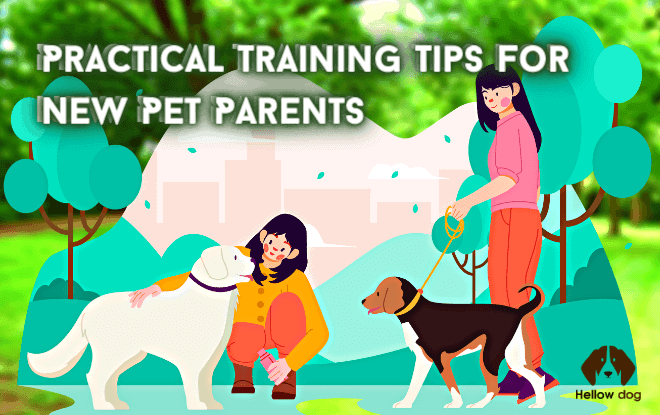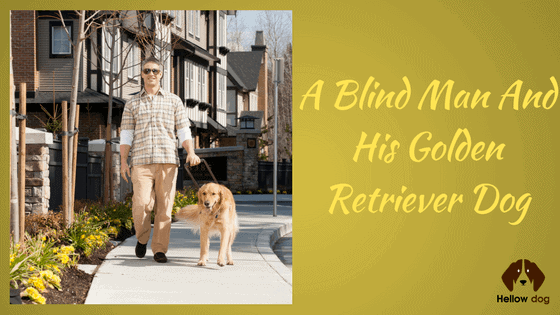Welcoming a puppy into your family is an exceptionally exciting time. Even so, training a puppy or a new dog can be pretty intimidating for any new pet parent. What’s more, obedience classes can only help so much; even though professionals can train your pup, you will still need to enforce some training yourself at home. Otherwise, your furry friend will only really showcase their good behavior during training classes.
An untrained puppy can become destructive and even aggressive. The excitable and unruly nature of an untrained dog can become a problem for anyone. But training a puppy for the first time isn’t always straightforward; some dog breeds are simply harder to train, while the dog’s age will also impact trainability.
So, we’ve gathered some of the most practical tips to help you train your new pup.
Stop Jumping As Soon As Possible
If you’ve adopted a new dog, specifically a puppy, you’ll want to do what you can to prevent jumping before it becomes a frustrating behavior. Seeing your puppy eagerly jumping when you arrive home from work or start preparing their food might be cute at first. However, jumping can become a problem as your adorable puppy grows into an uncontrollable adult dog that pushes over your visitors in excitement.
The best approach is not to give your puppy attention until their paws are on the ground and they are calm. Your puppy will quickly learn that it will only receive attention when relaxed.
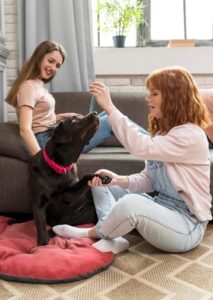
Encourage Socializing Early On
It can be a nightmare for any pet parent to control a dog that doesn’t tolerate other pets well; a visit to the local dog park will be insufferable.
In order to prevent this, it’s best to encourage your puppy to socialize early on. The more experience your dog has with other pets around, the better they will tolerate other animals as they grow.
A few ways to encourage your puppy to socialize are to welcome visitors who have pets for play dates, find puppy play classes or obedience classes, or visit your local dog park regularly.
Secure Your Home Environment
Dogs of all ages can be curious and pretty adventurous, specifically when left alone; this can become pretty problematic for pet parents who can’t be home all day every day, which is the case for most.
Fortunately, various products are available to help pet parents secure their fur babies at home. These products range from electric pet fences for larger homes to indoor pet gates.
A few reasons why you need an electric pet fence include keeping your pet safely within a boundary without supervision and guaranteed safety. So you won’t ever find yourself putting up missing pet posters.
Opt For A Microchip Implant
A microchip implant is placed beneath the skin of your pet. The chip is about the size of a grain of rice and uses passive radio-frequency tech. These microchips are popular among farm animals and those who live on larger properties. Nevertheless, they can be helpful for any pet parent that doesn’t want to lose their furball.
Should your puppy get out, the chip can be scanned as soon as your pup is found and then taken to a vet or animal shelter. After that, your pet will be safely returned. Microchipping your pet is an affordable extra measure to keep your pet safe.
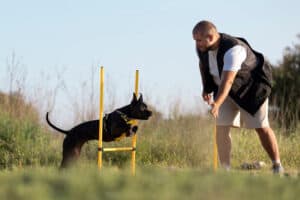
Reward Successful House Training
Beyond the fear of your pet getting out while you’re at work, new pet parents might also find house training extremely intimidating.
While it’s wise to use puppy training pads, repellent scents, and other pet fouling products, you’ll also need to make a habit of rewarding successful fouling. How else will your pup know when they’ve gotten it right?
Unfortunately, many new pet parents make the common mistake of only disciplining their puppy for fouling in the wrong place while forgetting to reinforce positive behavior with a treat or even some cuddles. Offering a treat every time your pet fouls in the correct place is the only way to encourage them to foul in the same place.
That said, house training will take some time. And some dog breeds will take longer than others to understand the goal. More often than not, it will take your puppy six months to a year to learn where to foul. So it’s crucial to remain persistent and patient. As a result, it’s important to keep a close eye on your puppy as much as possible; the more vigilant you are to fouling accidents, the easier it will be to react accordingly.
Choosing the Right Training Tools
When thinking of practical training tips for new pet parents, it’s crucial to consider the tools you’ll use. Specifically, you’ll want equipment designed for durability and efficiency. For instance, you might be searching for a durable leash for dogs. This tool is particularly valuable for larger or more energetic breeds. A sturdy, well-made leash can make a difference in maintaining control during training sessions and reinforcing positive behaviors for your new pup
Crate training aims to provide a safe space for your pet, not a prison. Your puppy must learn that their crate is its own secure space. Otherwise, crate training won’t be successful.
The benefits of crate training can prevent destructive behavior, even when you are not at home. However new pet parents often make the mistake of using a crate as a punishment rather than a comfortable space.
Choose a crate that’s spacious enough for your dog and place a soft blanket, chew toys, interactive toys, and even a plush toy inside the crate to encourage your pet to sleep comfortably. Keep the crate in a room where you often spend your time, and introduce your pet slowly by occasionally leaving a treat inside the crate. Over time, your puppy will associate the crate with comfort and security.
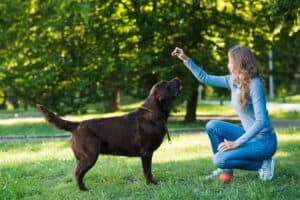
Playtime
Another mark of a well-trained dog is good behavior, even during playtime. Well-trained dogs will play fetch, tug-of-war, find toys, and other games, while untrained dogs will run around, bark, and chew on things.
The only way your puppy will learn to play the games mentioned above is if you teach them. It might be as tricky as house training your pup, but your furry friend can learn how to play any game if you have enough patience to teach them the game.
Grooming and Care Tips
While training your new puppy, grooming and caring for your puppy’s health and well-being is just as important.
Taking your puppy for vaccinations and a routine checkup once a year is essential. Your vet will manage everything from worm and flea prevention to joint health and everything in between. In addition to this, you must opt for high-quality pet food recommended by your vet. Unfortunately, all dog food brands are not the same, and some store-bought brands can be harmful to the health of your pup.
Once you have vet care and the right puppy food, you’ll need to spend some time grooming your pet at least twice a month. Your puppy will need the occasional bath with hypoallergenic pet shampoo. In addition, you should also brush your puppy once a week.
Training a new dog of any age can be intimidating for any new pet parent. But with the right approach, patience, and enough persistence, you can train your furry friend in a few months. Nevertheless, if you find training more of a frustrating struggle than it should be, finding dog obedience classes in your area is worthwhile. An experienced dog trainer will guide you through the process of training any puppy.

